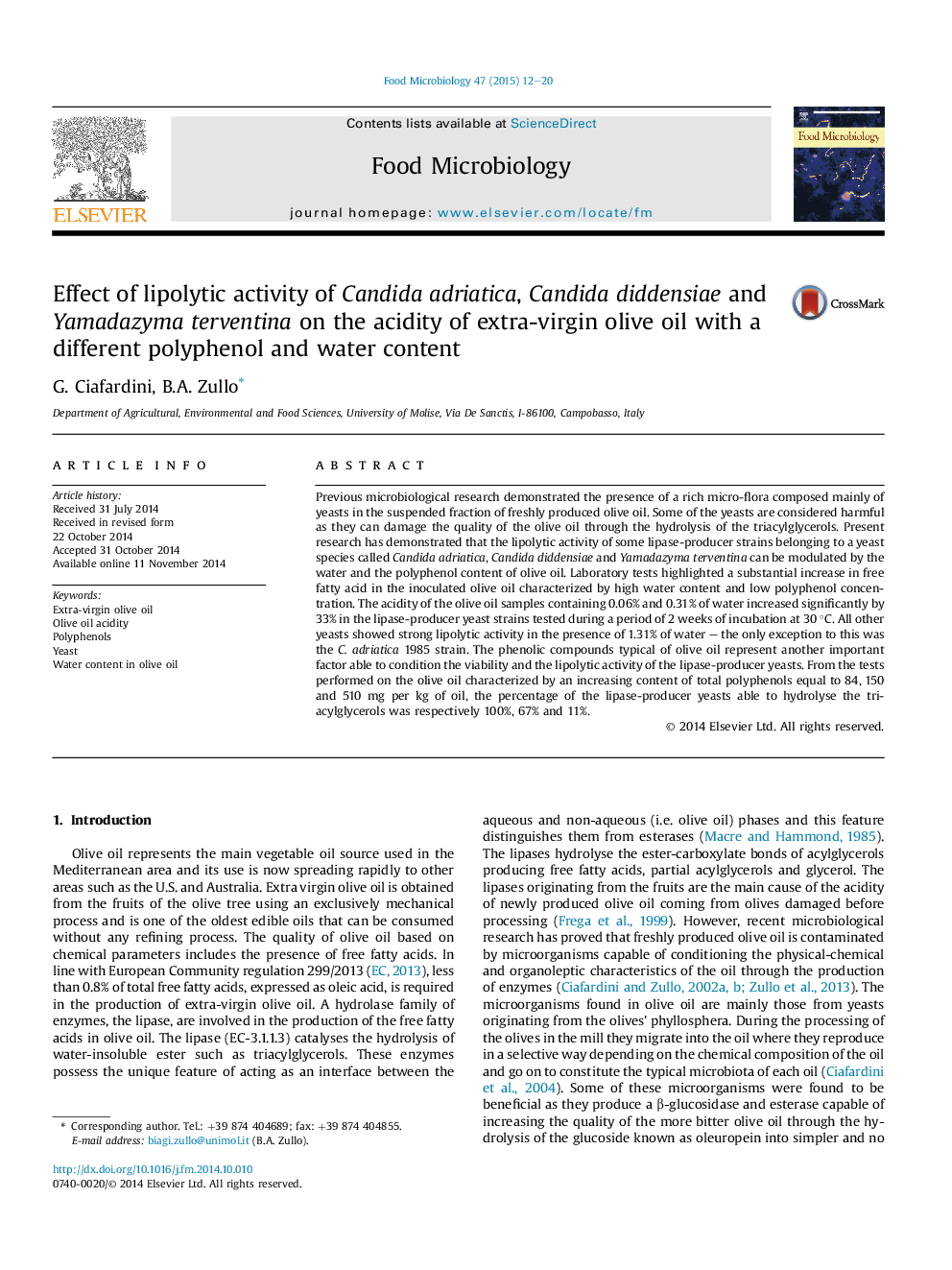| کد مقاله | کد نشریه | سال انتشار | مقاله انگلیسی | نسخه تمام متن |
|---|---|---|---|---|
| 4362845 | 1616253 | 2015 | 9 صفحه PDF | دانلود رایگان |

• Some yeasts can damage the quality of the olive oil.
• The lipolytic activity of nine lipase-producer oil-born yeast strains has been studied.
• The free fatty acid increased significantly in the inoculated-olive oil with high water content.
• The lipolytic activity of the yeasts in olive oil can be modulated by the polyphenols content.
Previous microbiological research demonstrated the presence of a rich micro-flora composed mainly of yeasts in the suspended fraction of freshly produced olive oil. Some of the yeasts are considered harmful as they can damage the quality of the olive oil through the hydrolysis of the triacylglycerols. Present research has demonstrated that the lipolytic activity of some lipase-producer strains belonging to a yeast species called Candida adriatica, Candida diddensiae and Yamadazyma terventina can be modulated by the water and the polyphenol content of olive oil. Laboratory tests highlighted a substantial increase in free fatty acid in the inoculated olive oil characterized by high water content and low polyphenol concentration. The acidity of the olive oil samples containing 0.06% and 0.31% of water increased significantly by 33% in the lipase-producer yeast strains tested during a period of 2 weeks of incubation at 30 °C. All other yeasts showed strong lipolytic activity in the presence of 1.31% of water – the only exception to this was the C. adriatica 1985 strain. The phenolic compounds typical of olive oil represent another important factor able to condition the viability and the lipolytic activity of the lipase-producer yeasts. From the tests performed on the olive oil characterized by an increasing content of total polyphenols equal to 84, 150 and 510 mg per kg of oil, the percentage of the lipase-producer yeasts able to hydrolyse the triacylglycerols was respectively 100%, 67% and 11%.
Journal: Food Microbiology - Volume 47, May 2015, Pages 12–20